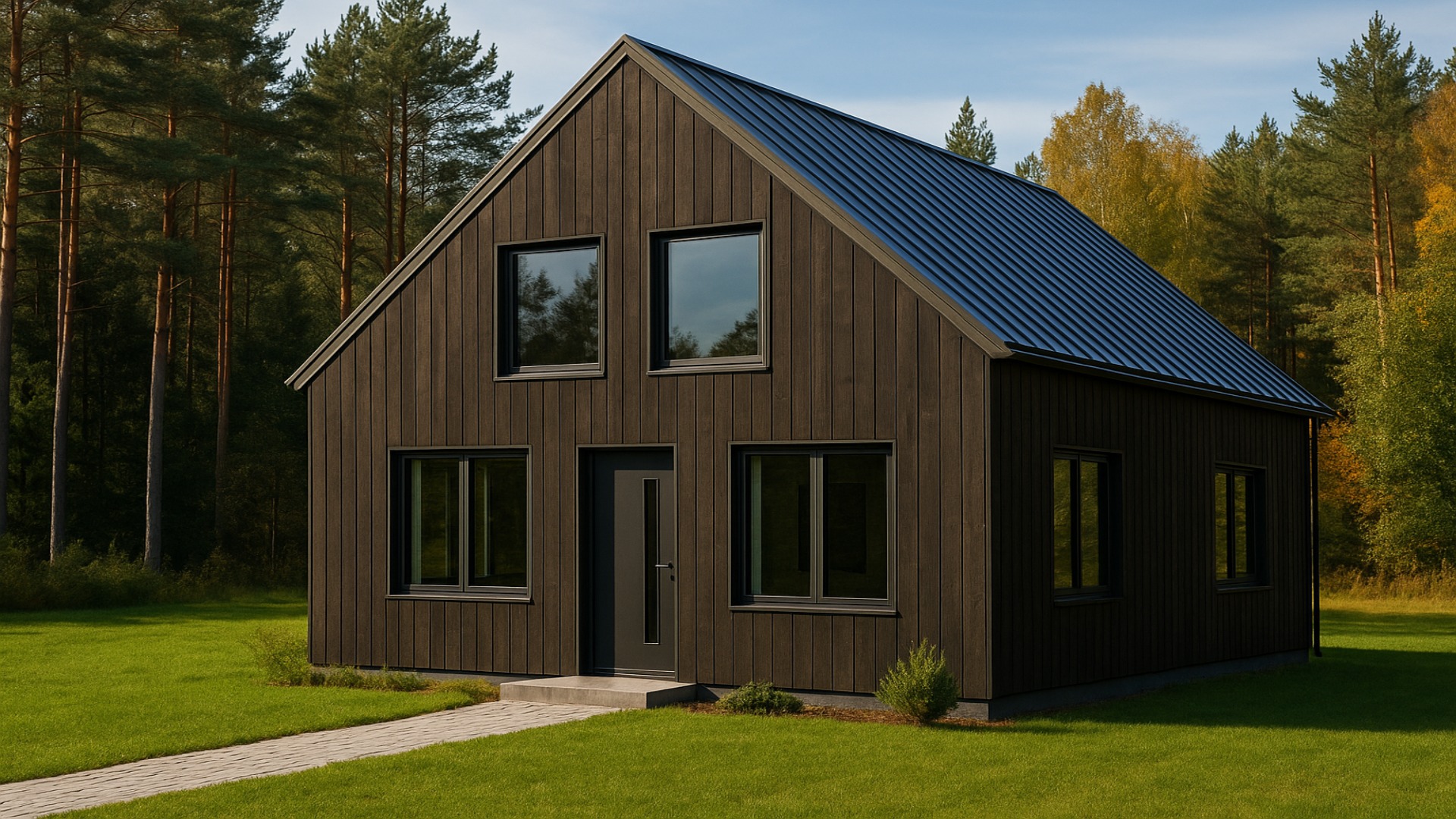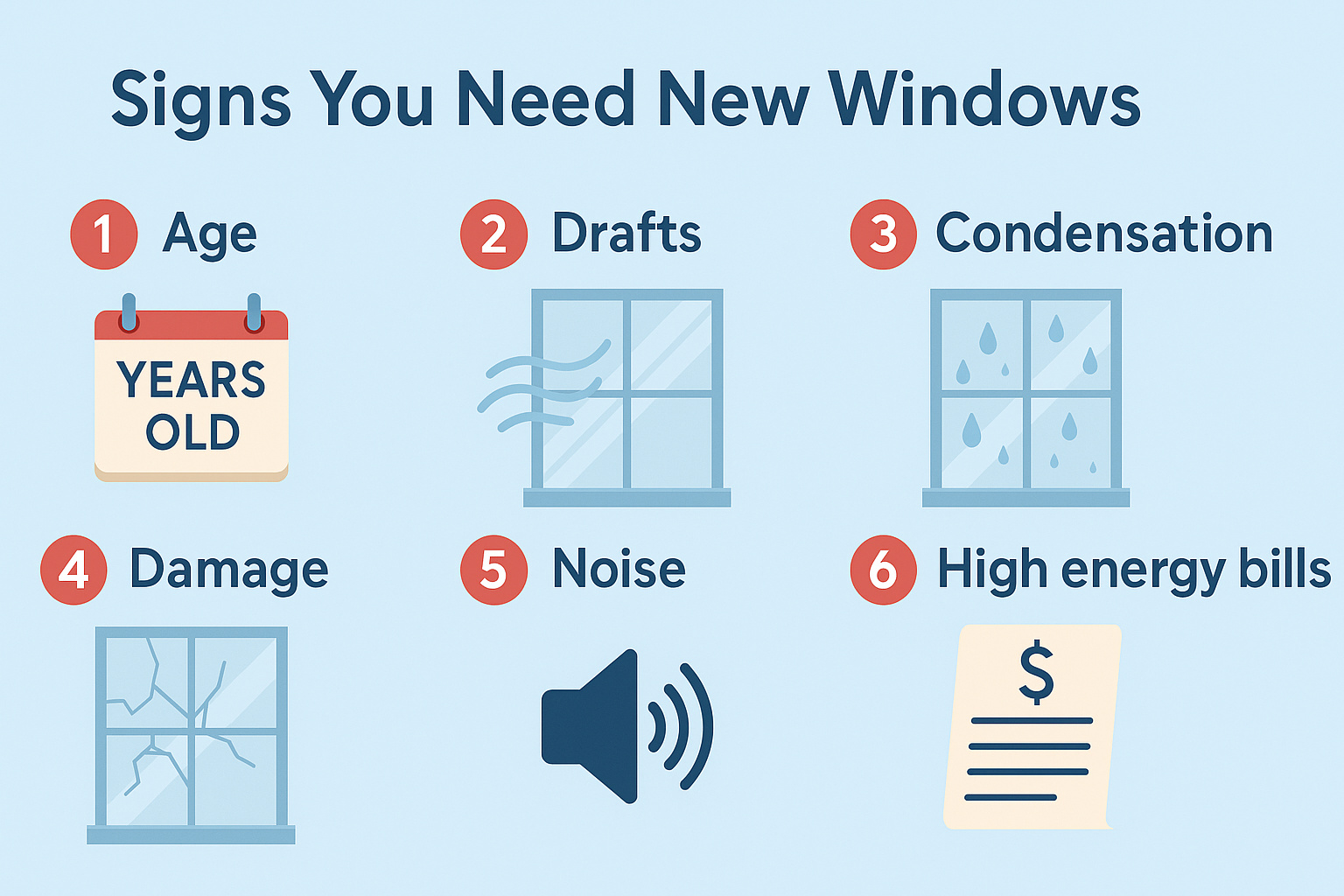
When to Replace Your Windows – Comprehensive Guide for Homeowners
Replacing your windows isn’t just about aesthetics—it’s a smart investment for comfort, energy efficiency, and property value. Drawing from Aimwin’s expertise, this enhanced guide helps you answer the key question: When is it time for new windows?
🕒 1. Age and Energy Loss
- Windows over 10 years old likely no longer match current insulation standards, leading to higher heat loss and energy costs.
- If utility bills are climbing and you feel cold drafts, it’s a clear indicator that performance is slipping .
🌡️ 2. Comfort & Condensation Issues
- Persistent condensation, mold growth, or dampness on window edges/top signal failure in seals and poor thermal performance .
- Look out for cold surfaces and discomfort near windows during heating seasons.
🛠️ 3. Structural Wear and Damage
- Deteriorated frames (rotting wood, cracked PVC) compromise functionality and security.
- If the frame is warped or cracked, a full replacement is advised over repairs .
🔊 4. Modernization & Noise Reduction
- Upgrading to double or triple glazing greatly enhances acoustic comfort, especially in noisy environments .
- Further benefits include improved light transmission and lower noise pollution.
💰 5. Energy Savings & Climate Goals
- New windows with low U‑value (< 0.9 W/m²K), gas-filled panes, and Low‑E coatings reduce energy consumption.
- They’re vital for eco‑friendly homes and relevant in passive building standards.
⏰ 6. Seasonal Timing
- Ideal replacement season: early spring or autumn when weather is mild and construction isn’t disruptive.
🔨 Step-By-Step Guide to Window Replacement
✅ 1. Assess Existing Windows for Insulation, Drafts, and Structural Damage
Start with a thorough inspection. Key indicators your windows are past their prime:
- Cold drafts near the frame – even when windows are closed.
- Condensation between panes – a sign of broken seals.
- Rot, cracks or warping in frames – especially in timber or old uPVC windows.
- Difficulty in opening, closing, or locking windows.
- Increased energy bills without any change in usage.
🕵️ Tip: Use a thermal camera or an incense stick to identify air leaks and temperature loss.
🪟 2. Choose Glazing – Double/Triple Panes, Gas Fills, and Low‑E or Laminated Glass
Your glazing decision dramatically affects comfort and efficiency:
- Double glazing is standard, offering solid insulation.
- Triple glazing is ideal for colder climates and noise-sensitive areas.
- Gas fills (argon or krypton) improve insulation between panes.
- Low‑E (low emissivity) coatings reflect heat back into the room.
- Laminated glass boosts safety and soundproofing (great for busy streets).
💡 Choosing the right glazing means balancing budget with energy savings and comfort expectations.
🪵 3. Select Frame Material (uPVC, Aluminum, Timber)
Frames are just as important as glass:
- uPVC – affordable, low-maintenance, good insulation.
- Aluminum – durable, modern aesthetics, slightly lower insulation unless thermally broken.
- Timber – natural and beautiful, but needs regular maintenance.
🧱 Consider composite frames for the best of all worlds – usually timber inside and aluminum outside.
🧰 4. Plan Installation: Full-Frame vs Insert Replacement; Use Warm Installation & Sealing Tapes
There are two main installation types:
- Insert (retrofit) replacement – fits into existing frames, cheaper and quicker, but less effective for insulation.
- Full-frame replacement – entire frame and sash replaced, allows correcting poor insulation or rot.
Warm installation techniques include:
- Vapor-permeable tapes outside (waterproof but breathable)
- Vapor-barrier tapes inside (prevent indoor moisture from entering wall structure)
- PU foam filling the gap between wall and frame
🔥 “Warm” doesn’t just mean cozy—it’s a system that reduces thermal bridges and improves energy ratings.
👷 5. Hire Reputable Installers, Ideally Certified by Manufacturers
Even the best windows fail with poor installation. Always:
- Choose installers certified by the window manufacturer.
- Ask for recent project references and photos.
- Check for warranty and liability coverage.
- Ensure they follow local building regulations and sealing standards.
🛑 Beware of “budget installers” who skip warm sealing or don’t level frames properly – it’ll cost you more later.
🌤️ 6. Time the Project for Optimal Weather Conditions in Spring or Autumn
Timing matters more than most think:
- Avoid extreme cold or heat – foam won’t expand properly, and sealing tapes may not adhere.
- Spring and early autumn are ideal – mild, predictable weather, and comfortable indoor conditions during replacement.
- Schedule ahead – good installers are booked months in advance during peak seasons.
📅 Bonus tip: Off-peak installation (late winter or late summer) can mean better pricing and faster scheduling.
🔗 Suggested Internal Links from aimwin.eu
Link these under a Related Articles or Further Reading section:
- Window replacement step by step – comprehensive guide to replacing windows and selecting glazing
- How to measure windows? – ensures accurate fitting and airtight performance
- Correct installation of energy‑efficient windows – warm installation methods and airtight sealing explained
- What are the steps to install windows? – a procedural checklist, rephrased and enriched with Aimwin’s practical perspective.
- 7 most common window installation mistakes – avoid costly errors during replacement


